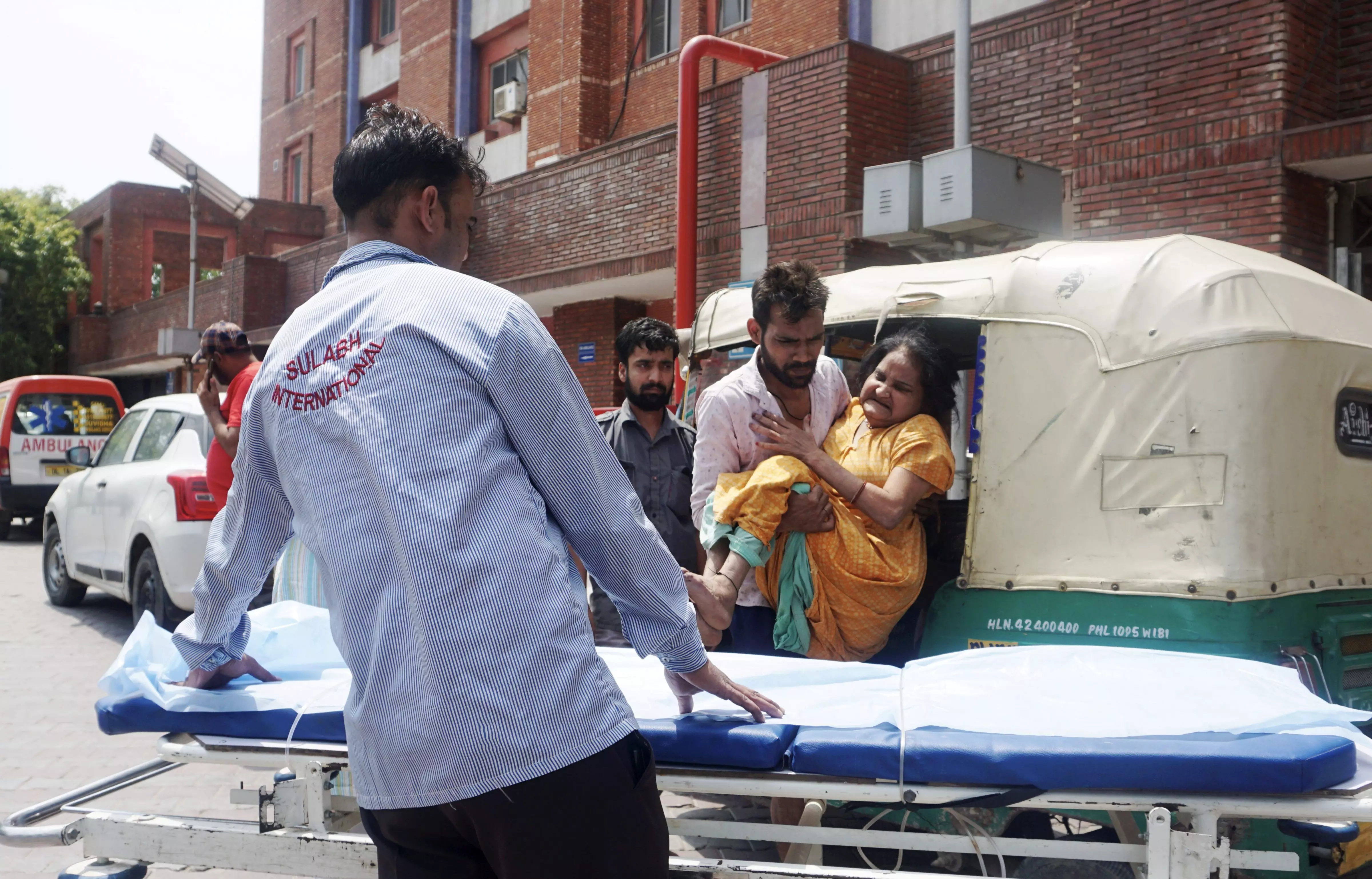
A woman suffering from a heat-related illness being brought to LNJP Hospital in Delhi on Thursday (June 20). Photo: PTI
Delhi: Three hospitals record 45 heat-related deaths
The capital city has been battling searing heatwave conditions, and hospitals have seen a rise in the number of casualties and patients owing to heat stroke

The national capital has recorded at least 45 deaths due to suspected heat-related illnesses at Ram Manohar Lohia, Safdarjung, and LNJP hospitals, officials said on Thursday (June 20).
Delhi has been battling searing heatwave conditions over the last few days. It got some relief on Thursday morning (June 20) due to light rain. Hospitals in the city have seen a rise in the number of casualties and patients owing to heat stroke.
11 deaths at Ram Manohar Lohia Hospital
Dr Ajay Chauhan, Professor of Medicine at Ram Manohar Lohia Hospital, said that between May 27 and 9 am of June 19, the Centre-run hospital got 47 cases of heatstroke.
In the next 24 hours, 26 heatstroke patients were brought to the hospital, the doctor said.
He also said that between May 27 and 9 am of June 19, the hospital recorded 11 suspected deaths of heatstroke and in the next 24 hours seven such suspected deaths were reported.
“Presently 32 patients with heat-related illnesses are admitted at RML hospitals out of which 26 are either very sick or on ventilators,” he said.
24 died in Safdarjung Hospital
The Safdarjung Hospital, another Centre-run facility in Delhi, has recorded 24 deaths since the beginning of the unrelenting heatwave, hospital authorities said.
The hospital received six new admissions on Thursday (June 20) between 8 am and 8 pm and two deaths were reported. The hospital has a total of 47 patients of heat-related illnesses with 29 of them in critical state, they said.
Since June 16, there have been 62 admissions due to heat-related illnesses while the death toll to date is 24, the hospital authorities said.
Designated ward for heat-related illnesses
The Safdarjung Hospital has set up a 23-bed designated ward for patients with heat-related illnesses. In the pre-heatwave stage, sensitisation programmes were conducted for all healthcare providers, the hospital said in a statement.
All doctors and nursing staff have been trained in triaging and acute management of patients with suspected heat-related illnesses (HRI), it added.
"Designated beds have been assigned and prepared for active management of suspected HRI patients. Beds are equipped with all facilities, including ventilators and monitors. Additional pedestal fans have been installed for patient care. Cooling devices including ice packs, cool fluids, spraying devices, and cooling sheets are available at all times in adequate numbers," it added.
10 fatalities at LNJP Hospital
The Delhi government-run LNJP Hospital has 17 patients admitted to its casualty ward while five patients succumbed in the last 24 hours at the ward, an official source said.
According to the hospital authorities, five patients have died due to suspected heatstroke between June 15 and June 19.
Spike in number of cremations
Meanwhile, at the city's main crematorium - Nigambodh Ghat - the number of cremations has seen a spike. Officials, however, could not confirm if the deaths were related to heat strokes.
On Wednesday (June 19), 142 corpses were brought to the Nigambodh Ghat for cremation, which is nearly 136 percentage points higher than the daily average of 50 to 60 bodies, Suman Gupta, general secretary of the Nigambodh Ghat Sanchalan Samiti, which manages operations at the crematorium, told PTI.
The number was higher on Tuesday (June 18) as well when 97 bodies were cremated at the city's oldest and largest crematorium.
"Usually, around 50-60 bodies are brought in here daily for cremation. The number has been higher in the last few days. Today, 35 cremations have taken place since morning and the number may go up by the end of the day," Gupta said on Thursday (June 20).
(With agency inputs)

